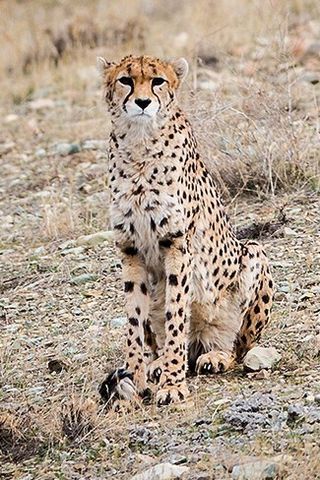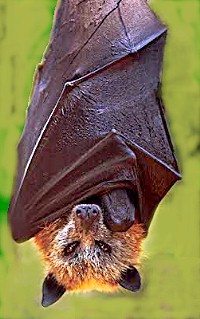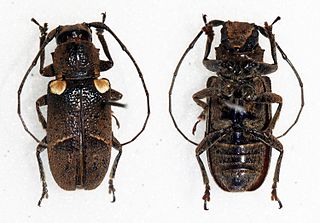
The cheetah is a large cat and the fastest land animal. It has a tawny to creamy white or pale buff fur that is marked with evenly spaced, solid black spots. The head is small and rounded, with a short snout and black tear-like facial streaks. It reaches 67–94 cm (26–37 in) at the shoulder, and the head-and-body length is between 1.1 and 1.5 m. Adults weigh between 21 and 72 kg. The cheetah is capable of running at 93 to 104 km/h ; it has evolved specialized adaptations for speed, including a light build, long thin legs and a long tail.

The Steller sea lion is a large, near-threatened species of sea lion, predominantly found in the coastal marine habitats of the northeast Pacific Ocean and the Pacific Northwest regions of North America, from north-central California to Oregon, Washington and British Columbia to Alaska. Its range continues across the Northern Pacific and the Aleutian Islands, all the way to Kamchatka, Magadan Oblast, and the Sea of Okhotsk, south to Honshu's northern coastline. It is the sole member of the genus Eumetopias, and the largest of the so-called eared seals (Otariidae). Among pinnipeds, only the walrus and the two species of elephant seal are bigger. The species is named for the naturalist and explorer Georg Wilhelm Steller, who first described them in 1741. Steller sea lions have attracted considerable attention in recent decades, both from scientists and the general public, due to significant declines in their numbers over an extensive portion of their northern range, notably in Alaska.

Acinonyx is a genus within the Felidae family. The only living species of the genus, the cheetah, lives in open grasslands of Africa and Asia.

The giant golden-crowned flying fox, also known as the golden-capped fruit bat, is a species of megabat endemic to the Philippines. Since its description in 1831, three subspecies of the giant golden-crowned flying fox have been recognized, one of which is extinct. The extinct subspecies was formerly recognized as a full species, the Panay golden-crowned flying fox. Formerly, this species was placed in the genus Pteropus; while it is no longer within the genus, it has many physical similarities to Pteropus megabats. It is one of the largest bat species in the world, weighing up to 1.4 kg (3.1 lb)—only the Indian and great flying fox can weigh more. It has the longest documented forearm length of any bat species at 21 cm (8.3 in).

Rhynochetos is a genus of ground-dwelling birds in the monotypic family Rhynochetidae. It contains two species, both endemic to New Caledonia, one of which is extinct.

The Asiatic cheetah is a critically endangered cheetah subspecies currently only surviving in Iran. Its range once spread from the Arabian Peninsula and the Near East to the Caspian region, Transcaucasus, Kyzylkum Desert and northern South Asia, but was extirpated in these regions during the 20th century. The Asiatic cheetah diverged from the cheetah population in Africa between 32,000 and 67,000 years ago.

The Northwest African cheetah, also known as the Saharan cheetah, is a cheetah subspecies native to the Sahara and the Sahel. It is listed as Critically Endangered on the IUCN Red List. In 2008, the population was suspected to number less than 250 mature individuals.
African cheetah refers to any of the following cheetah subspecies native to Africa:

Acerodon is a genus of bats in the family Pteropodidae containing five species, all native to forests in Southeast Asia, and all considered threatened. They are closely related to Pteropus. These bats are considered herbivores(frugivore)and feed on leaves and fruits. They can usually be found in a tropical forest or in a swamp like wetland.

The kagu or cagou is a crested, long-legged, and bluish-grey bird endemic to the dense mountain forests of New Caledonia. It is the only surviving member of the genus Rhynochetos and the family Rhynochetidae, although a second species has been described from the fossil record.

Eurypygiformes is an order formed by the kagus, comprising two species in the family Rhynochetidae endemic to New Caledonia, and the sunbittern from the tropical regions of the Americas. Its closest relatives appear to be the tropicbirds of the tropical Atlantic, Indian, and Pacific oceans.
The lowland kagu is a large, extinct species of kagu. It was endemic to the island of New Caledonia in Melanesia in the south-west Pacific region. It was described from subfossil bones found at the Pindai Caves paleontological site on the west coast of Grande Terre. The holotype is a right tibiotarsus, held by the Muséum national d'histoire naturelle in Paris. The specific epithet comes from the Latin orarius from its presumed lowland distribution, as opposed to its congener the living kagu R. jubatus.

Prosoplus is a genus of longhorn beetles of the subfamily Lamiinae, containing the following species:

The Southeast African cheetah is the nominate cheetah subspecies native to East and Southern Africa. The Southern African cheetah lives mainly in the lowland areas and deserts of the Kalahari, the savannahs of Okavango Delta, and the grasslands of the Transvaal region in South Africa. In Namibia, cheetahs are mostly found in farmlands. In India, four cheetahs of the subspecies are living in Kuno National Park in Madhya Pradesh after having been introduced there.
Prosoplus atlanticus is a species of beetle in the family Cerambycidae. It was described by Stephan von Breuning in 1938.
Prosoplus rugulosus is a species of beetle in the family Cerambycidae. It was described by Stephan von Breuning in 1938.
Prosoplus imitans is a species of beetle in the family Cerambycidae. It was described by Stephan von Breuning in 1961.
Prosoplus costatus is a species of beetle in the family Cerambycidae. It was described by Karl-Ernst Hüdepohl in 1996. It is known from Borneo and Malaysia.
Prosoplus sinuatofasciatus is a species of beetle in the family Cerambycidae. It was described by Blanchard in 1855.

"Ubirajara" is an informal genus of compsognathid theropod that lived during the early Cretaceous period in what is now Brazil. The manuscript describing it was available online pre-publication but was never formally published and, as a consequence, both genus and species name are considered invalid and unavailable. It is known by a single species, "Ubirajara jubatus", recovered from the Crato Formation. It was described as the first Gondwanan non-avian theropod dinosaur discovered with preserved integumentary structures. Such proto-feathers, most likely used for display, include slender monofilaments associated with the base of the neck, increasing in length along the dorsal thoracic region, where they would form a mane, as well as a pair of elongate, ribbon-like structures likely emerging from its shoulders. The taxon was informally named in 2020 in a now-withdrawn in-press academic paper. The description caused controversy due to the fossil having been apparently illegally smuggled from Brazil. In July 2022, Germany agreed to return the fossil to Brazil after a legitimate export permit could not be found. The name "Ubirajara jubatus" was removed from ZooBank in November 2022, which means it no longer has any nomenclatural significance.












